Da Ferdinando de’ Medici a Manet: il limone, oggetto di ogni passione

Édouard Manet, Le Citron, 1880, Olio su tela, 14 × 22 cm, Parigi, Musée d'Orsay, Eredità del conte Isaac de Camondo, 1911 | © Musée d’Orsay, Dist. RMN - Grand Palais / Patrice Schmidt
Dal 1 March 2024 al 19 May 2024
Roma
Luogo: Accademia di Francia a Roma – Villa Medici
Indirizzo: Viale della Trinità dei Monti 1
Telefono per informazioni: +39 06 67611
Sito ufficiale: http://www.villamedici.it
Agrume iconico del paesaggio mediterraneo, il limone è al centro del programma primaverile di Villa Medici grazie al prestito eccezionale dal Musée d’Orsay dell’opera Le Citron (Il limone) dipinta da Édouard Manet nel 1880, che sarà esposta per tre mesi nelle camere storiche del cardinale de’ Medici, come momento clou della visita guidata a Villa Medici.
La presenza silenziosa del Limone, che sembra fare appello a tutti i sensi, sarà l’occasione per una residenza letteraria della scrittrice e filosofa francese Vinciane Despret, che ad aprile sarà chiamata a lasciarsi ispirare da questo frutto.
Nel XVI secolo, nel vasto giardino della tenuta acquistata nel 1576 da Ferdinando de’ Medici, crescevano in abbondanza aranci, limoni, melangoli e cedri. Coltivati con cura dai giardinieri per preservarne dimensioni e gusto, gli agrumi rifornivano la tavola del cardinale, mentre i fiori e le scorze venivano canditi, marinati oppure trasformati in oli profumati e distillati nella fonderia del palazzo. Era in particolare il cedro, o mala medica, ad essere coltivato per le sue virtù farmacologiche, che alleviavano le febbri e fungevano da antidoto contro i veleni. Oggi, i preziosi agrumi sono rievocati dai visitatori di Villa Medici quando contemplano la volta affrescata della stanza degli uccelli, studio privato di Ferdinando.
Da Roma a Parigi, da una passione per gli agrumi all’altra: tre secoli dopo la nascita dell’agrumeto di Ferdinando de’ Medici, Édouard Manet (Parigi, 1832-1883) dipinge Il limone. Nonostante le dimensioni modeste (14 x 22 cm), il dipinto è una delle nature morte più potenti del pittore, che rivendicava la sua ambizione di diventare il “San Francesco della natura morta”. Il pittore ha isolato il frutto dai toni gialli su un sobrio piattino in ceramica smaltata nera che ne esalta gli elementi fondamentali: il colore acceso, la grana della scorza, la semplicità.
Nel 2024, il Ministero della Cultura francese e il Musée d’Orsay celebrano i 150 anni dell’impressionismo. Parallelamente alla mostra Paris 1874. Inventer l’impressionnisme (Parigi 1874. Inventare l’impressionismo) che si terrà a Parigi, in oltre 30 musei francesi sarà possibile scoprire circa 180 opere eccezionalmente concesse in prestito dal Musée d’Orsay.
Le Citron di Manet sarà così protagonista a Villa Medici, ricucendo un legame con la passione per gli agrumi della famiglia de’ Medici.
La presenza silenziosa del Limone, che sembra fare appello a tutti i sensi, sarà l’occasione per una residenza letteraria della scrittrice e filosofa francese Vinciane Despret, che ad aprile sarà chiamata a lasciarsi ispirare da questo frutto.
Nel XVI secolo, nel vasto giardino della tenuta acquistata nel 1576 da Ferdinando de’ Medici, crescevano in abbondanza aranci, limoni, melangoli e cedri. Coltivati con cura dai giardinieri per preservarne dimensioni e gusto, gli agrumi rifornivano la tavola del cardinale, mentre i fiori e le scorze venivano canditi, marinati oppure trasformati in oli profumati e distillati nella fonderia del palazzo. Era in particolare il cedro, o mala medica, ad essere coltivato per le sue virtù farmacologiche, che alleviavano le febbri e fungevano da antidoto contro i veleni. Oggi, i preziosi agrumi sono rievocati dai visitatori di Villa Medici quando contemplano la volta affrescata della stanza degli uccelli, studio privato di Ferdinando.
Da Roma a Parigi, da una passione per gli agrumi all’altra: tre secoli dopo la nascita dell’agrumeto di Ferdinando de’ Medici, Édouard Manet (Parigi, 1832-1883) dipinge Il limone. Nonostante le dimensioni modeste (14 x 22 cm), il dipinto è una delle nature morte più potenti del pittore, che rivendicava la sua ambizione di diventare il “San Francesco della natura morta”. Il pittore ha isolato il frutto dai toni gialli su un sobrio piattino in ceramica smaltata nera che ne esalta gli elementi fondamentali: il colore acceso, la grana della scorza, la semplicità.
Nel 2024, il Ministero della Cultura francese e il Musée d’Orsay celebrano i 150 anni dell’impressionismo. Parallelamente alla mostra Paris 1874. Inventer l’impressionnisme (Parigi 1874. Inventare l’impressionismo) che si terrà a Parigi, in oltre 30 musei francesi sarà possibile scoprire circa 180 opere eccezionalmente concesse in prestito dal Musée d’Orsay.
Le Citron di Manet sarà così protagonista a Villa Medici, ricucendo un legame con la passione per gli agrumi della famiglia de’ Medici.
SCARICA IL COMUNICATO IN PDF
COMMENTI

-
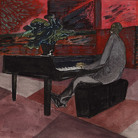 Dal 5 November 2025 al 1 March 2026
Asti | Palazzo Mazzetti
Dal 5 November 2025 al 1 March 2026
Asti | Palazzo Mazzetti
PAOLO CONTE. Original
-
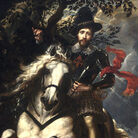 Dal 28 October 2025 al 15 February 2026
Brescia | Pinacoteca Tosio Martinengo
Dal 28 October 2025 al 15 February 2026
Brescia | Pinacoteca Tosio Martinengo
Peter Paul Rubens. Giovan Carlo Doria a cavallo
-
 Dal 31 October 2025 al 21 March 2026
Rovereto | Mart Rovereto
Dal 31 October 2025 al 21 March 2026
Rovereto | Mart Rovereto
Le sfide del corpo
-
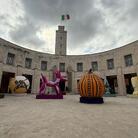 Dal 31 October 2025 al 15 February 2026
Roma | Museo del Genio
Dal 31 October 2025 al 15 February 2026
Roma | Museo del Genio
Vivian Maier. The exhibition / Pop Air. Ugo Nespolo
-
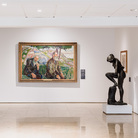 Dal 30 October 2025 al 1 March 2026
Venezia | Centro Culturale Candiani
Dal 30 October 2025 al 1 March 2026
Venezia | Centro Culturale Candiani
Munch e la rivoluzione espressionista
-
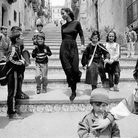 Dal 24 October 2025 al 1 March 2026
Saluzzo | La Castiglia
Dal 24 October 2025 al 1 March 2026
Saluzzo | La Castiglia
Ferdinando Scianna. La moda, la vita


